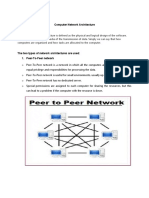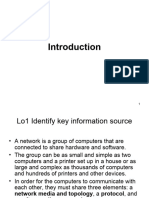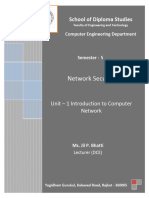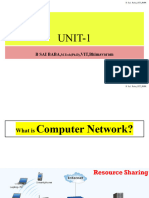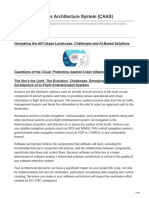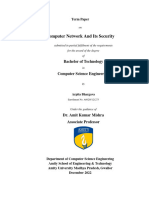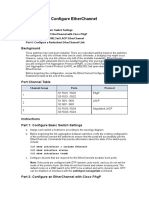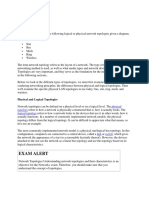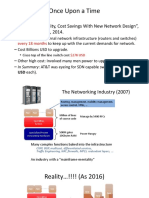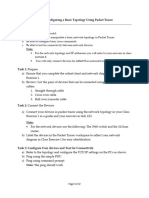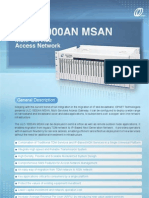0% found this document useful (0 votes)
7 views33 pagesChapter 11 Notes
The document discusses network topology, classifying networks into peer-to-peer and client-server types, detailing their advantages and disadvantages. It further explains various topologies including bus, ring, star, tree, mesh, and hybrid topologies, outlining their structures, components, benefits, and drawbacks. Additionally, it lists network functions such as data transmission, resource sharing, and user authentication.
Uploaded by
atharvnichat250Copyright
© © All Rights Reserved
We take content rights seriously. If you suspect this is your content, claim it here.
Available Formats
Download as PDF, TXT or read online on Scribd
0% found this document useful (0 votes)
7 views33 pagesChapter 11 Notes
The document discusses network topology, classifying networks into peer-to-peer and client-server types, detailing their advantages and disadvantages. It further explains various topologies including bus, ring, star, tree, mesh, and hybrid topologies, outlining their structures, components, benefits, and drawbacks. Additionally, it lists network functions such as data transmission, resource sharing, and user authentication.
Uploaded by
atharvnichat250Copyright
© © All Rights Reserved
We take content rights seriously. If you suspect this is your content, claim it here.
Available Formats
Download as PDF, TXT or read online on Scribd
/ 33




